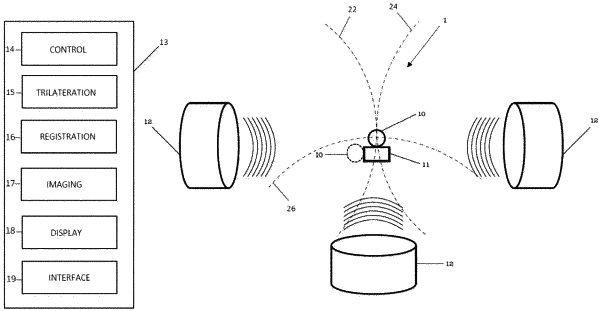| CPC A61B 8/481 (2013.01) [A61B 8/4477 (2013.01); A61B 34/30 (2016.02); G06T 7/0014 (2013.01); G06T 7/30 (2017.01); G06T 2207/30016 (2013.01)] | 20 Claims |

|
1. A system for real-time localization of a millimetric or submillimetric object in a viscoelastic medium based on an acoustic resonance of at least two distinct bubbles in the viscoelastic medium, said system comprising:
at least two distinct bubbles attached to said object, each bubble comprising a hermetic envelope filled with a gas, each bubble being configured to be either structurally anchored on the object or assembled with the object by means of at least one fastening element;
at least one ultrasound transducer configured to emit initial ultrasound signals and to detect deflected ultrasound signals deflected at the surface of the at least two distinct bubbles; and
a processing unit in communication with the ultrasound transducer and configured to generate localization data of the object from localization data of the at least two distinct bubbles based on the deflected ultrasound signals detected by the at least one ultrasound transducer,
wherein the at least two distinct bubbles are attached to the object in such a way that the localization of the at least two distinct bubbles enable the processing unit to determine a spatial position and an orientation of the object.
|